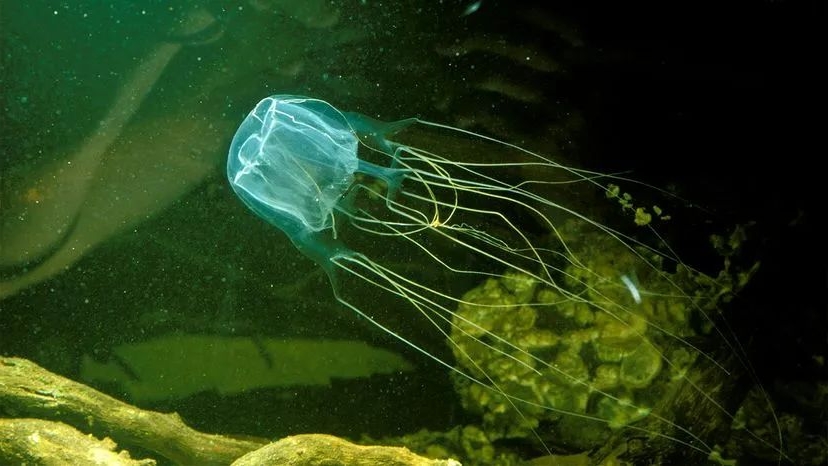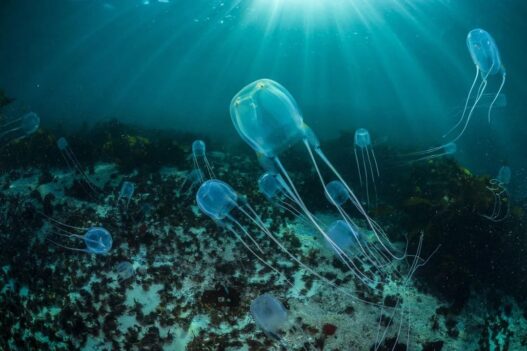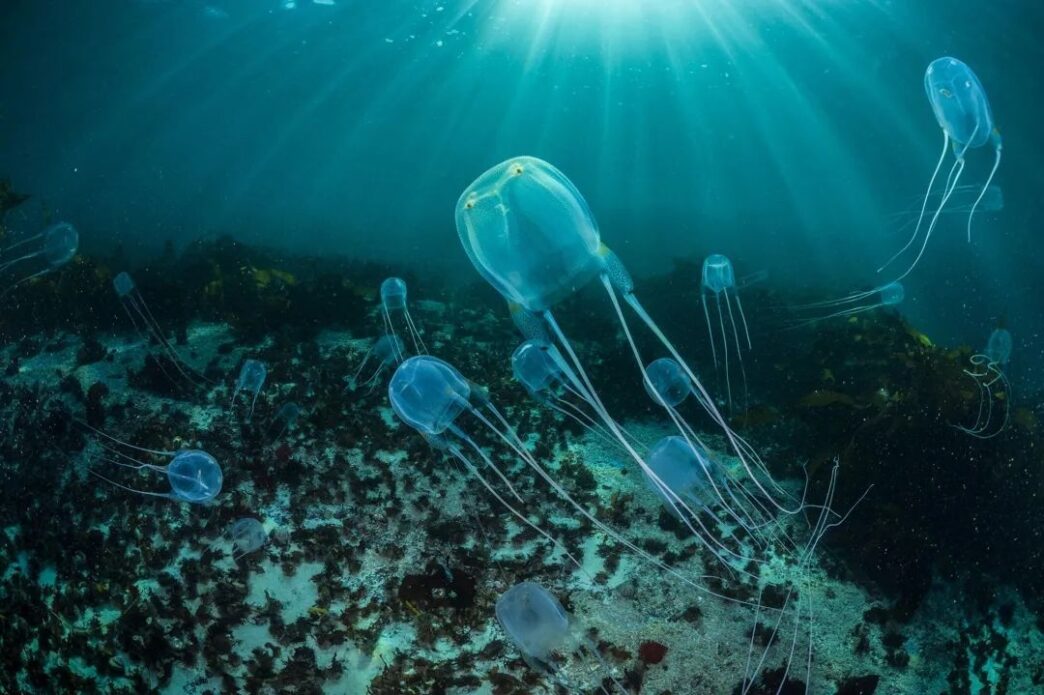Sharks have long been perceived as one of the greatest threats to humans. This is why events like “Shark Week” have been established. But should jellyfish also have their own week of awareness? To most, jellyfish seem harmless. They resemble flat gummy candies, and their tentacles dangle like noodles. Sharks, on the other hand, are known for their sharp teeth, capable of tearing through flesh. However, jellyfish present their own unique annoyances. Their stings are painful and itchy, unlike sharks, which could easily rip off a limb.
The box jellyfish (Chironex fleckeri), also known as the sea wasp or sea assassin, releases venom so potent that it can cause an increase in blood pressure. This leads to cardiac arrest and, in extreme cases, death.
The Deadliest Marine Creatures

In the ocean, there is a creature more dangerous than sharks. Known scientifically as Cubozoa, or the box jellyfish, this species is far more venomous. The Australian box jellyfish (Chironex fleckeri) is the most potent. Its tentacles can grow up to 6 feet (about 1.8 meters). If you encounter it, you may not survive long enough to make it back to shore. It is considered the deadliest marine animal on Earth.
In addition, if you’re stung by the tiny Carukia barnesi jellyfish, the pain is excruciating. The sting causes intense pain, vomiting, headaches, and anxiety, all of which are nearly unbearable. The sting can also lead to fluid buildup in the lungs, which can be fatal without prompt treatment.
Box jellyfish are primarily found in specific areas of the Indian and Pacific Oceans and the northern waters of Australia. They can also be found near Hawaii, the Gulf of Mexico, and the U.S. East Coast. Only a few species are found in all three major oceans.
The box jellyfish, also known as the sea wasp and sea assassin, is one of 50 species that have been described. These jellyfish typically have more than 15 tentacles, with around 5,000 nematocyst cells. These cells contain tiny capsules capable of launching microscopic stingers at speeds exceeding 60 kilometers per hour. These stingers release venom that rapidly raises the blood pressure of its prey, causing heart failure and ultimately resulting in death.
Although there is no official death toll, it is estimated that between 20 and 40 people die each year from box jellyfish stings in the Philippines. Experts believe the actual death toll is likely higher than reported, due to frequent misdiagnosis or incorrect determination of cause of death. It is known that the injuries and deaths caused by box jellyfish far exceed those caused by sharks, stingrays, and sea snakes. Interestingly, survival chances are higher if bitten by a black widow spider.
Aggressive Hunters

The box jellyfish is a fascinating creature. It has about 20 eyes, most of which possess lenses, corneas, and irises. This enables the box jellyfish to perceive its surroundings. Regular jellyfish can only distinguish light from dark. But the box jellyfish’s advanced nervous system allows it to react quickly to avoid or make contact with objects.
Unlike other passive hunters, box jellyfish actively hunt small fish and shrimp while still maintaining movement. They propel themselves through the water by opening and closing their bell-shaped head. They move at speeds of about 6.4 km/h. It’s like they’re opening an umbrella and gliding through the water.
Dr. Angel Yanagihara, a marine biologist at the University of Hawaii at Manoa, explains that the venom release mechanism of box jellyfish is quite different from that of a rattlesnake. When a box jellyfish stings, it releases a substance known as a “digestive cocktail” that helps capture and digest food. This cocktail acts like a “molecular shotgun,” creating holes in cells that could cause a person’s heart to stop within five minutes. Therefore, encountering a box jellyfish sting is extremely dangerous.
Box jellyfish have been around for at least 600 million years and have survived several mass extinctions, making them one of the oldest animals on Earth. Like all jellyfish, their numbers are increasing due to warming oceans and the influx of hypoxic fertilizer runoff. They are most active from November to April. Dr. Yanagihara has survived multiple box jellyfish stings and believes that the threat posed by box jellyfish is far greater than any threat they pose to us.
What to Do if Stung by a Box Jellyfish
Dr. Yanagihara has studied common treatment methods, such as removing tentacles, rinsing the wound with vinegar, or applying ice, but these methods may actually worsen the sting. The best treatment is to immediately apply the toxin-inhibiting cream she invented, called “Pain No More,” and seek emergency medical help right away.



















